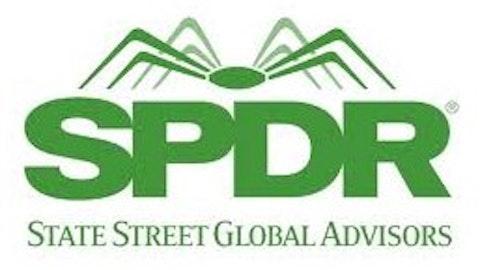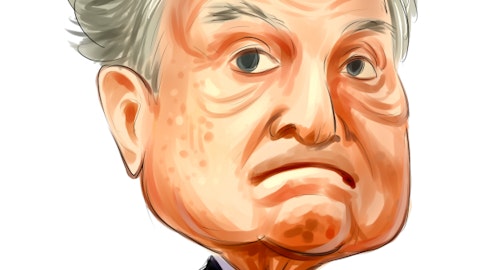Gold’s massive historical returns have left no shortage of gold bugs in the commodity world. For years, investors have been flocking to the precious metal, choosing the commodity as their number one choice for safe haven investing. Gold also holds its appeal as being a potential hedge against inflation, allowing investors to protect their portfolios from a rise in prices. Although the yellow metal has no major industrial purposes, its demand across both developed and emerging markets has grown tremendously over the years as investors seek to add value and stability to their portfolios.
In the gold exchange-traded product space, there is perhaps no fund more instrumental to gold’s rise than the SPDR Gold Trust (NYSEARCA:GLD), which just so happens to be the second largest ETF in the world. GLD is home to nearly $68 billion in total assets and trades over 9 million times a day. But in recent years there has been a significant amount of backlash from individual investors claiming GLD to be a sham and stating that the fund is nothing more than “paper gold”. Whether or not your looking to completely avoid GLD or simply want to diversify your gold exposure, we outline an all ETF portfolio that allows investors to establish a tactical tilt towards the lucrative commodity [for more gold news and analysis subscribe to our free newsletter].
Portfolio Snapshot
First things first, here are the ETFs that we have chosen for this particular portfolio.

As can be seen above, all of the funds in the portfolio are directly related to the gold industry. Although there are only three “commodity” ETFs, the other funds do offer exposure to gold miners and explorers, as well gold-hedged exposure to domestic equities.
Holdings Overview
Below is a brief overview of each component of this portfolio.
UBS E-TRACS S&P 500 Gold Hedged (NYSEARCA:SPGH): This ETN tracks a benchmark that seeks to simulate the combined returns of investing equal dollar amounts in the S&P Total Return Index and long positions in near-term exchange-traded COMEX gold futures contracts.
Market Vectors Gold Miners (NYSEARCA:GDX): This ETF provides exposure to publicly traded companies worldwide involved in the mining of gold.
Global X Funds (NYSEARCA:GGGG): This fund offers exposure to the largest and most liquid gold mining companies globally.
Market Vectors Junior Gold Miners (NYSEARCA:GDXJ): This ETF is designed to measure the performance of publicly traded small- and mid-cap companies that generate at least 50% of their revenues from gold and/or silver mining, hold real property that has the potential to produce at least 50% of the company’s revenue from gold or silver mining when developed, or primarily invest in gold or silver [see also Which Gold Miner ETF Is Right For You? GDX vs. GDXJ vs. RING].
Global X Funds (NYSEARCA:GLDX): This fund is designed to track the price movements in shares of companies which are active in the gold mining industry as an explorer.
iShares Gold Trust (NYSEARCA:IAU): This ETF is designed to track the spot price of gold bullion by holding bars in a secure vault.
ETFS Asian Gold Trust (NYSEARCA:AGOL): This Grantor Trust seeks to track the spot price of gold bullion held in secure vaults in Singapore.
ETFS Gold Trust (NYSEARCA:SGOL): This Grantor Trust is designed to track the spot price of gold bullion by holding gold bars in a secure vault in Switzerland.
Historical Return Analysis

It is important to note that many of the ETFs used in this portfolio have relatively short operating histories, limiting the extent of valuable historical return analysis [see also Why No Investor Should Own GLD].
Gold miners, as represented by GDX, suffered significant losses in 2008, as the global recession hammered equity prices around the world. However in 2009 and 2010, a number of components in our portfolio posted significant gains as investors fled to the “safe haven” precious metal. It is worth noting however, the extreme volatility seen in our equity component, whereas the commodity ETFs have been able to maintain much better relative stability in terms of price fluctuations.
Portfolio Expenses
This portfolio is designed for long-term use consistent with a “buy, hold, and rebalance” strategy. As such, minimization of expenses is necessary to avoid return erosion resulting from compounding costs. To this end, we constructed a portfolio with a weighted-average expense ratio of 47 basis points, which is significantly lower than fees charged by actively-managed mutual funds. The impact of this reduced costs structure over the horizon of this portfolio is significant [see also The Ten Commandments of Commodity Investing]:

While this can certainly be used as an all encompassing group of holdings, those who wish to adopt a gold investment strategy that avoids allocations to GLD can also use this model portfolio as a smaller part of their overall group of holdings.
This article was originally written by Daniela Pylypczak, and posted on CommodityHQ.





